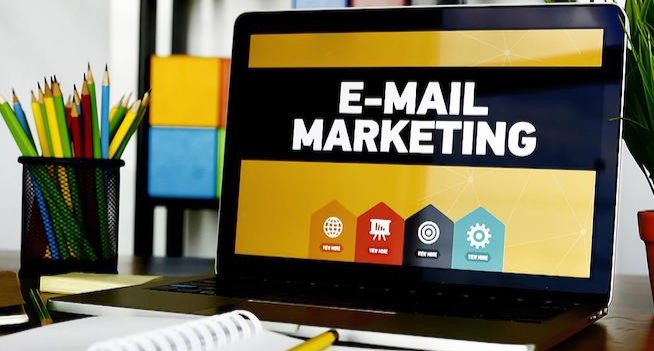Using Email Marketing Automation to Nurture Leads and Drive Sales: A Case Study







Using Email Marketing Automation to Nurture Leads and Drive Sales: A Case Study

Using Email Marketing Automation to Nurture Leads and Drive Sales: A Case Study
Introduction
In today’s fast-paced digital environment, email marketing remains one of the most effective tools for nurturing leads and driving sales. This case study details how a mid-sized SaaS company successfully implemented automated email workflows to nurture prospects and convert them into paying customers. By leveraging segmentation, personalization, and strategic drip campaigns, the company saw a significant increase in lead conversion rates and revenue.
Background
The SaaS company offered cloud-based software solutions targeted at small and medium-sized businesses. Despite a steady stream of leads from various marketing channels (social media, paid search, and organic), the company was struggling to convert these leads into customers. Many prospects would sign up for the free trial but fail to engage further, leading to lost sales opportunities.
Objectives
- Increase lead-to-customer conversion rate by 20% within six months.
- Automate lead nurturing to reduce manual follow-ups.
- Improve engagement and retention during the free trial period.
- Reduce customer acquisition costs by relying more on automated processes.
Phase 1: Identifying Gaps and Setting Up Automation
The company’s first step was analyzing their lead nurturing process to identify gaps and opportunities. They discovered:
- Leads were not being segmented: All leads were receiving the same generic emails, regardless of their stage in the customer journey.
- Manual follow-up emails were time-consuming and inefficient, often leading to delays in communication.
- Lack of personalized content: Emails were not tailored to the specific needs and pain points of the leads.
Actions Taken:
- Selecting an Email Marketing Automation Tool: The company chose a robust email marketing platform that could handle segmentation, automated workflows, and behavior-triggered emails.
- Segmenting the Audience: Leads were segmented into different groups based on factors such as:
- The industry they belonged to.
- Stage in the customer journey (e.g., new subscribers, free trial users, or warm leads).
- Engagement history (e.g., email opens, link clicks, website activity).
Phase 2: Creating the Email Automation Workflow
The next step was designing a comprehensive email workflow to nurture leads based on their behavior and stage in the sales funnel. Key types of emails included:
- Welcome Series:
For new subscribers and free trial sign-ups, a welcome series was set up to introduce the company’s product and key features. This series included:- An introduction to the company.
- A guide on how to get the most from the free trial.
- Case studies showing how similar companies benefited from the software.
- Educational Drip Campaign:
For leads not ready to make an immediate purchase, an educational drip campaign was launched. The emails provided:- Tutorials on how to use the software.
- Industry insights and trends relevant to the lead’s business.
- Blog posts and whitepapers on how to overcome common challenges in their industry.
- Behavior-Triggered Emails:
These emails were sent based on the lead’s engagement with the company’s website or emails:- Abandoned Free Trial: For users who signed up but did not activate or engage with the product, a reminder email was sent offering assistance and resources.
- Highly Engaged Leads: For leads who frequently interacted with emails or visited the pricing page, an email offering a personalized demo or a discount was triggered.
- Lead Scoring Integration:
The company integrated a lead scoring system within the email platform to prioritize high-intent leads for follow-up. When a lead reached a certain score based on their engagement, they were automatically funneled into the sales pipeline for a more personalized follow-up from the sales team.
Phase 3: Personalization and Testing
To maximize the impact of the email automation strategy, the company focused on personalization and A/B testing.
- Personalized Emails: Each email was tailored with the lead’s name, industry, and specific pain points addressed. Product recommendations were based on previous actions or interests demonstrated by the lead.
- A/B Testing: Subject lines, email copy, and call-to-action (CTA) buttons were A/B tested to find the most effective messaging. The company tested elements like:
- Subject lines (e.g., benefit-focused vs. curiosity-driven).
- CTA buttons (e.g., “Start Your Free Trial” vs. “Explore Our Features”).
- Email timing (morning vs. afternoon delivery).
Results
After six months of implementing email automation, the SaaS company achieved impressive results:
- Lead-to-Customer Conversion Rate: Increased by 35%, surpassing the original goal of 20%. The conversion rate during the free trial period improved significantly due to personalized email follow-ups.
- Revenue Growth: The company saw a 28% increase in revenue driven by email marketing alone, with a reduction in the cost of acquisition due to the automation system.
- Open and Click-Through Rates: Open rates for emails increased by 40%, and click-through rates improved by 25% due to better segmentation and personalization.
- Customer Retention: The drip campaigns helped in retaining customers post-free trial, with a noticeable drop in churn rate.
Conclusion
This case study demonstrates the effectiveness of email marketing automation in nurturing leads and driving sales. By leveraging segmentation, personalized workflows, and behavior-based triggers, the SaaS company significantly improved its conversion rate and customer acquisition process.
Key Takeaways:
- Segmentation is Crucial: Properly segmenting leads ensures they receive relevant content, improving engagement and conversions.
- Automation Saves Time: Automated workflows reduce the need for manual follow-ups, enabling the sales team to focus on high-intent leads.
- Personalization Boosts Engagement: Tailoring emails to individual needs and behaviors increases open rates, click-through rates, and ultimately sales.
- Testing and Iteration Lead to Optimization: A/B testing various elements of the email campaigns helped the company optimize performance over time.
Hashtags for Email Marketing Automation Case Study:
#EmailMarketing #LeadNurturing #MarketingAutomation #EmailWorkflows #Personalization #LeadConversion #SalesFunnel #CustomerAcquisition #SaaSMarketing #DigitalMarketing
This structured approach to email automation can be applied across industries to enhance lead nurturing, improve sales conversion, and drive revenue growth.

